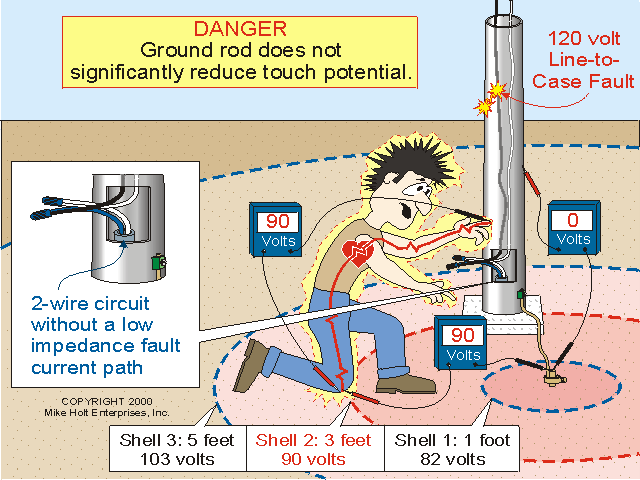- Location
- Wisconsin
- Occupation
- PE (Retired) - Power Systems
LarryFine said:A GFCI only works if it's connected to a supply with a grounded conductor. By grounded, I mean whatever surface one might be in contact with when the accidental touch occurs. In a non-grounded supply, there's no electrocution hazard for the same reason the first ground fault doesn't trip a breaker.
A GFCI works by comparing the current flowing into the line side of the device to the current returning to the load side - what goes out must come back-no more no less. Have you ever had to troubleshoot any GFCI device connected to a shared neutral conductor even though there is no fault to a non-circuit conductor?
Yes, there is no danger of shock if you are truly isolated from the reference plane, but in this case the GFCI does not operate because there is no current flow, the presence or absence of a ground rod has nothing to do with it.


